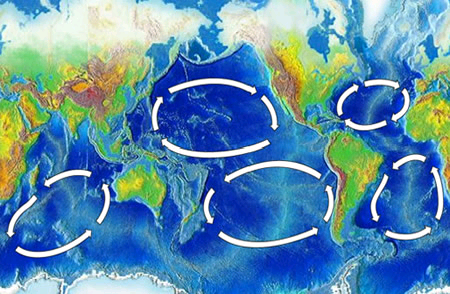Life: Explained. Oh, Now We Understand.

A biologist at Case Western Reserve demonstrates why peer-review really is the gold standard of scholarly credibility, just as Darwinists have been telling us for so long. In the journal Life (“Theory of the Origin, Evolution, and Nature of Life,” Vol. 2:1-105 (2012)) — yes, peer-reviewed — Dr. Erik Andrulis explains it all for you:
[N]ot only the evolutionary emergence of life on earth and in the universe but also the structure and function of existing cells and biospheres.
In addition to resolving long-standing paradoxes and puzzles in chemistry and biology, Dr. Andrulis’ theory unifies quantum and celestial mechanics.
Acknowledging in his paper that “how life abides by the second law of thermodynamics yet evolutionarily complexifies..is a fundamental mystery,” Andrulis cuts the Gordian knot by “demonstrating” that the earth is alive, that “the earth is theoretically synonymous with life”:
The trans-disciplinary theory demonstrates that purportedly inanimate, non-living objects — for example, planets, water, proteins, and DNA — are animate, that is, alive. With its broad explanatory power, applicable to all areas of science and medicine, this novel paradigm aims to catalyze a veritable renaissance.
How does it work? Picture a gyre, the vortex pattern that an ocean forms as its currents rotate.
The basic idea of Dr. Andrulis’ framework is that all physical reality can be modeled by a single geometric entity with life-like characteristics: the gyre. The so-called “gyromodel” depicts objects — particles, atoms, chemicals, molecules, and cells — as quantized packets of energy and matter that cycle between excited and ground states around a singularity, the gyromodel’s center.
So there you have it. The earth is “synonymous with life” once we reduce and totally redefine life so that it is identical with those swirly spots produced by ocean currents. Life evolves because that’s just what it does. Now that’s clear. What this lacks in explanatory power, it makes up for with simplicity.
But wait a minute, how does Andrulis know he’s right? Simple. “To test his paradigm, Dr. Andrulis designed bidirectional flow diagrams that both depict and predict the dynamics of energy and matter.” In other words, he drew some pictures. If only we’d known it would be so easy to explain how life got to be the way it is.
It kind of makes you think of Michael Ruse, talking to Ben Stein in Expelled and explaining how life got its start “on the backs of crystals” and chastising Stein for not grasping why this is more believeable than intelligent design.
Speaking of which, you must watch Michael Ruse again if you haven’t done so in a while. He never fails to lighten and brighten our day. You can never watch Dr. Ruse imagination-surfing on the backs of crystals too many times.
